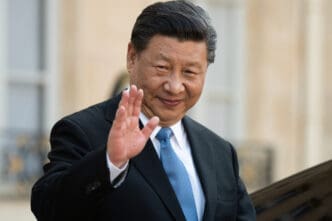Executive Summary
The Story So Far
Why This Matters
Who Thinks What?
At the recent United Nations General Assembly in New York, Chinese President Xi Jinping outlined ambitious new strategies for addressing climate change, signaling a significant transformation of the country’s energy consumption and urban planning. This announcement contrasted sharply with President Donald Trump’s characterization of climate change as a “con job,” highlighting a growing policy divergence between the two global powers.
China’s Climate Commitments
President Xi stated that China aims to reduce its carbon emissions by 7 to 10 percent from peak levels by 2035. Concurrently, Beijing plans to increase the share of non-fossil fuels in its energy mix to over 30 percent, with a particular focus on expanding wind and solar power capacity.
Xi emphasized that the transition to green and low-carbon energy represents “the trend of the time,” urging the international community to maintain a focused approach. These targets underscore China’s commitment to a significant energy overhaul in the coming decade.
Building a Climate-Resilient Future
Driven by intensifying climate change, Chinese policymakers are leveraging scientific insights to undertake a comprehensive transformation of the nation’s infrastructure. Data indicating rising risks of floods, heatwaves, and extreme weather events is guiding these efforts.
The re-engineering of urban landscapes prioritizes resilience, designed to meet the challenges posed by a hotter, wetter, and more unpredictable climate. Analysts suggest that this ambitious transformation not only addresses environmental concerns but also offers significant economic benefits.
Contrasting Global Approaches
The policy divide on climate change between China and the United States became particularly evident at the UN General Assembly. While President Xi advocated for global collaboration and unveiled specific national targets, President Donald Trump reiterated his skepticism regarding the scientific consensus on climate change.
This stark contrast underscores differing national priorities and approaches to one of the most pressing global challenges. China’s proactive stance positions it as a key player in the international climate discourse, even as the U.S. adopts a more isolationist position on environmental policy.








